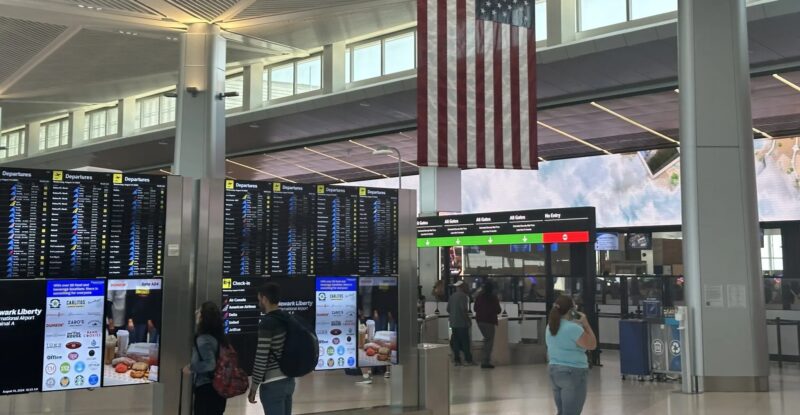Please enjoy this Op-Ed submission from Avigilon, a professional-grade security systems provider.
Airports can be high-traffic, complex and uniquely vulnerable environments, often requiring operators to leverage advanced security measures to safeguard customers and employees.
In 2024, the Transport Security Administration (TSA) intercepted almost 6,700 firearms and screened 900 million passengers at airport security checkpoints, illustrating the importance of structured security procedures in terms of maintaining public safety. However, a balance between security and ease-of-transit must be achieved to meet customer and carrier needs.
Striking an appropriate balance
A survey by Jettly found almost 50% of respondents had faced airport security wait times of over one hour, causing 6% to miss their scheduled flight. This, combined with wider related factors like breaches of security checkpoints can disrupt critical operations, introduce delays, negatively impact customer experience and, in some cases, lead to notable financial losses.
At Avigilon, a professional-grade security systems provider, we believe an ideal balance between security and ease-of-transit can be routinely achieved through the implementation of smart technology systems. AI-driven airport security solutions help operators identify suspicious activities, engage responses and safeguard occupants accurately and efficiently.
By leveraging airport security cameras with cutting-edge AI video analytics, operators can warn on-site security staff of unusual activities and emerging threats in real-time, providing them with relevant insights automatically to inform swift response and help minimize delays.
Immediate, informed threat responses
With an AI-informed video management system in place, operators are empowered to build workflows where relevant insights are immediately sent to staff in response to active threats.
Via secure cloud-based communications, on-site teams are warned of emerging threats like persons carrying contraband items, crowds forming in unusual areas and banned individuals attempting to access protected areas. AI video analytics learn expected behaviors and alert operators to security events that require immediate action, helping to inform swift responses.
Teams can leverage image detection AI to efficiently identify persons and events of interest, even when faced with vast amounts of footage. In high-traffic, complex facilities like airports, ensuring anomalies are identified swiftly and accurately enables proactive risk management.
Improving site-wide situational awareness
The ability for AI-powered surveillance systems to continuously observe high-risk locations, autonomously identify suspicious activities and immediately engage appropriate responses can be instrumental in enhancing passenger safety and flow. In practice, staff are freed to focus on more complex aspects of their roles with minimal need to manually observe feeds.
On-site teams can focus on easing congestion, assisting passengers and maintaining safe environments in the moment, safe in the knowledge that they’ll be alerted to significant risks like checkpoint breaches or violent altercations remotely via secure personal smart devices.
AI-powered facial recognition technology accelerates search and response times by swiftly identifying people of interest across complex airport facilities, instantly alerting operators and providing contextually-relevant information to help improve site-wide situational awareness.
Banned individuals and known offenders can be added to site-specific watchlists that inform security system operations. Should a camera identify a person of interest, operators can be notified in real-time and responses can be enacted to reduce confusion and minimize delays.
By providing security teams detailed, contextually-relevant, real-time insights into emerging threats, operators can contain responses within areas of immediate interest to help mitigate impacts to wider operations and minimize disruptions across farther reaches of the facility.
A comprehensive airport security solution
AI-powered surveillance systems are not only helpful in identifying and informing responses to active threats, through integrations with wider technologies, these systems can enhance access and building management workflows to ease congestion and reduce resource waste.
Airport security solutions that integrate CCTV and access control systems enable operators to link access alerts to relevant video footage, when paired with a cloud-based management system that can be accessed remotely, teams can review and respond to issues in real-time.
Should a passenger attempt to access a restricted area, or move back through a checkpoint, operators can be remotely notified and instructed to respond, helping to keep high-risk areas secure and minimize delays. This can help tackle, for example, the rising issue of accidental checkpoint breaches perpetrated by people re-entering one-way zones; with an AI-powered solution in place, systems can be configured to instantly respond to anomalous movements.
AI-powered surveillance systems can also produce analytics reports detailing occupancy patterns and trends. Operators can use this information to adjust layouts, open new access routes or adjust HVAC systems in response to high and low-traffic, helping to ensure smooth transit through facilities while minimizing resource waste and reducing employee workloads.
AI analytics solutions provide facility managers and security staff a holistic view of site-wide operations, helping to ensure both security and logistical concerns are promptly addressed.
Powering a safer, more efficient aviation industry
Intelligent threat responses and efficient building management are just a few examples of the benefits AI-powered surveillance can bring to the aviation industry. AI systems can be configured to detect foreign objects on runways, leveraged to streamline vehicular access control and used to identify unattended baggage, helping to power versatile improvements.
By providing on-site personnel live, accurate, data-rich insights into anomalies and emerging threats, operators can both improve passenger safety and minimize disruptions to essential operations, helping to power a more secure, efficient and dynamic aviation industry.
 About the Author
About the Author
Sean Toohey is a freelance journalist and digital media specialist with extensive experience covering news, developments and emerging trends in the commercial security sector.
Currently focused on AI analytics and security systems integration, Sean’s work explores the adoption and impact of smart technologies across high-risk industries.
Featured image credited to Mary Kirby












